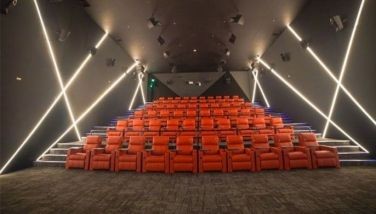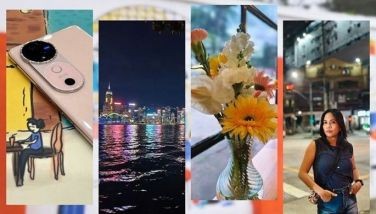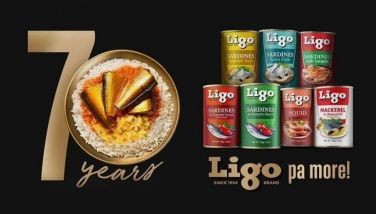The Julian Schnabel experience
When Julian Schnabel recently announced that he had plans to bring peace to the Middle East, it was a statement typical of his famously audacious ego, like when he said in another decade that he was the closest thing to Picasso we’ll see in this effing life. Which, as it turns out, may be closer to the truth than his critics will be comfortable with. His paintings, some larger than a New York apartment, fetch up to a million dollars, and with four critically acclaimed films under his directing belt, a Gramercy Park Hotel interior design project and even an album of country ballads, Schnabel is now being hailed as a Renaissance Man, following a period of being the art world’s pajama-wearing enfant terrible after literally crashing the New York scene with his broken plate paintings in 1979 — and then resurrecting, virtually by himself, the then-moribund medium of painting.
“I’m going to devote myself to try and make things right over there,” Schnabel reportedly said at a press con for his latest film. Miral, a story by Rula Jebreal about the life of a Palestine woman who put up an orphanage in Jerusalem during its turbulent post-war years, will be his fifth biographical film and perhaps his most socially relevant, as it is set amidst one of the world’s most enduring conflicts. Yet rather than making any grand statements, we expect it to be suffused with the same deep empathy and sensitivity he has shown his previous subjects, in particular the paralyzed French magazine editor Jean-Dominique Bauby who broke through his “locked-in” condition and dictated a memoir of his life with nothing but his left eye. A seemingly impossible and terribly depressing story to direct, yet Schnabel created a cinematic language that was intensely beautiful and uplifting. The Diving Bell and the Butterfly remains a prime example of how an “art” film can be accessible and universal. The movie picked up awards at Cannes and the Golden Globe and cemented Schnabel’s reputation as an eminent filmmaker, so much so that his other life as a painter has been overshadowed, at least to the general population.
 Schnabel was in the middle of filming on location in Israel and so did not stay longer in Asia — despite being lured with the prospect of surfing in the Philippines — when he flew to Singapore to open his exhibit of prints and recent paintings. It is a rare chance for those of us in Manila to get to see some of what the art world has been buzzing about (and Robert Hughes, snarkily) in the last three decades. Thirty-three of Schnabel’s prints from 1983-1998 are on view at the Manila Contemporary and eight of his recent paintings are hanging at the National Museum. Fortune Cookie Projects, a New York and Singapore-based partnership between Mary Dinaburg and Howard Rutkowski, brought the exhibit to Singapore and was convinced by Valentine Willie of Manila Contemporary, who came to the opening with an entourage of Philippine fans and journalists, to take the show here.
Schnabel was in the middle of filming on location in Israel and so did not stay longer in Asia — despite being lured with the prospect of surfing in the Philippines — when he flew to Singapore to open his exhibit of prints and recent paintings. It is a rare chance for those of us in Manila to get to see some of what the art world has been buzzing about (and Robert Hughes, snarkily) in the last three decades. Thirty-three of Schnabel’s prints from 1983-1998 are on view at the Manila Contemporary and eight of his recent paintings are hanging at the National Museum. Fortune Cookie Projects, a New York and Singapore-based partnership between Mary Dinaburg and Howard Rutkowski, brought the exhibit to Singapore and was convinced by Valentine Willie of Manila Contemporary, who came to the opening with an entourage of Philippine fans and journalists, to take the show here.
“He’s been credited as having reinvented painting in the 1980s when people were looking at other methodologies to make work,” Dinaburg says on the importance of Schnabel as an international artist. “They said ‘painting is dead,’ but because of his interest in it, his vigor, and the new things he did on canvas, it started a whole dialogue again.” The artist continued to be important in the ’90s and 2000s, using imagery, sources and media from everywhere, like Mexican and Greek pots, Asian prints, and French X-rays, to which he was criticized for not being “American” enough.
Rutkowski explains, “In the old days, if you were a painter you stayed a painter. That’s what you did. Schnabel inspired a lot of artists today who are using a variety of tools to make art. So if you’re a young painter or sculptor today, you don’t limit yourself to that, you’ll pick up a video camera. You’re making art, you’re making things — that’s important. That’s why Julian is so influential, he’s one of the few artists of the last 30 years who’s really been able to explore art across frontiers, and explore it successfully.”
Fortune Cookie Projects’ vision is to create an interaction between Western artists and Asian audiences and collectors and vice versa, bringing what they consider to be the best and most important works from the region to a place that would otherwise have no chance of ever seeing the works. “You have to experience art,” Dinaburg says. “Looking at reproductions in a book is not the same. Especially with Julian, his work is really experiential. He gives the viewer a lot of leeway in looking at his work, he gives you a lot of different parts, materials, images and abstraction on every single thing he does. And then you put it together as a viewer.”
 A “typical” Schnabel painting would consist of a navigation map, a tarp, a rug, a piece of sailcloth or some kind of found material which he would paint over with bold, abstract strokes and sometimes words like “duende” or “Pandora” — postmodern gestures that collide different worlds, dislocate references and hint of graffiti-style vandalism. But whether they are just simple streaks of paint or a whole mess of colors and textures, Schnabel’s works are always compositionally dynamic, full of creative energy and even delight.
A “typical” Schnabel painting would consist of a navigation map, a tarp, a rug, a piece of sailcloth or some kind of found material which he would paint over with bold, abstract strokes and sometimes words like “duende” or “Pandora” — postmodern gestures that collide different worlds, dislocate references and hint of graffiti-style vandalism. But whether they are just simple streaks of paint or a whole mess of colors and textures, Schnabel’s works are always compositionally dynamic, full of creative energy and even delight.
As for working with Julian himself, the partners claim that it’s always been a pleasure. “We had heard that he could be quite difficult, but when we met him he was the most generous, wonderful and warm person,” Dinaburg says. “He knows what he wants and he demands it to be a certain way — but all great artists do that.” The edge the two have over other gallerists is that they’ve been doing this for quite a long time, each with around 30 years in the industry. They’ve developed relationships and work directly with the artists and consequently have their pick from among the artist’s work. “A lot of times when people bring traveling shows out, they’re not able to bring the best work because they bring what’s not being ‘used.’ We don’t believe in that — we try to put together the best show we can.”
The two, when choosing which artists to get behind and introduce to galleries and curators around the world, are less interested in whether the artist is Chinese, Korean or Filipino than whether the work is good, and has what they feel is an international vocabulary that can cross borders. Dinaburg says, “The idea of art as a decorative thing is not the definition that interesting artists use, rather the idea of art as expiration, and trying to be that conduit between art, philosophy and life.” Adds Rutkowski, “We’re interested in taking work that is more conceptually based. There’s a lot of art that can be sold easily, but that’s not our prime motivation.”
“Art has to challenge you. It should be difficult. Otherwise what’s the point of making it, looking at it or buying it?”
* * *
Julian Schnabel Recent Work (prints) is on view at the Manila Contemporary, 2314 Pasong Tamo Ext., Makati until July 5. The paintings are on exhibit at the North Wing Gallery, Museum of the Filipino People, Agrifina Circle, Ermita, Manila until July 30.



















